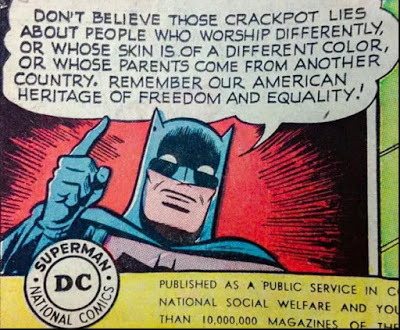Marty Halpern's Blog, page 13
February 27, 2017
The Forgotten Beasts of Eld by Patricia A. McKillip
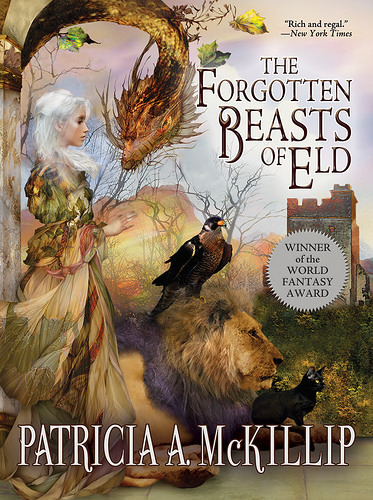 As I continue to catch up on my belated blog posts....
As I continue to catch up on my belated blog posts....My most recent project was The Forgotten Beasts of Eld [image error] by Patricia A. McKillip, forthcoming in September from Tachyon Publications.
I'll admit that I had not read this book previously (it was originally published in 1974), and to my delight, the story had me intrigued from the very beginning. Which seems to be the overall consensus from the many reviews I have read since completing work on this project.
The Forgotten Beasts of Eld has the honor of winning the very first World Fantasy Award for Best Novel, presented in 1975 at the first World Fantasy Convention, held in Providence, Rhode Island, the home of H. P. Lovecraft.
This is one project that I wanted to keep working on, and working on...not to be done with the project itself, but to find out what came next in the story. And as noted in one of the reviews I read, the prose is so seductive that I had to keep reminding myself that this is work!
Here are some mini excerpts from a few of those reviews I read, with links to the full reviews (and doing my best not to reveal too many spoilers):
I admit it: I have been seduced by Patricia A McKillip's The Forgotten Beasts of Eld, ...the latest in my trawl through fantasy champions of days gone by. Gorgeous, lyrical prose, a story that is more than just a linear journey from one drama to another, and a three-dimensional female character: it feels a million miles away from my manful slogs through Michael Moorcock's Corum trilogy, and Poul Anderson's Hrolf Kraki's Saga....I think I've fallen for this book because it's so different to what I was expecting: a cool drink of water in the midst of the overwrought, derivative, under-edited and overwritten tomes that dominate much of fantasy today – and, judging from my excursions into Corum and Kraki, did in the past as well.—Alison Flood, The Guardian Books Blog
The Forgotten Beasts of Eld is a gorgeously told tale of love and the human cost of war and revenge. It has a love of riddles, inventive magical beasts, and a well-drawn cast of believable characters with a strong, engaging female protagonist. However what truly elevates the book is Patricia A. McKillip's poetic language. Her command of striking imagery and finely balanced phrases places The Forgotten Beasts of Eld in another category altogether, ...a high Fantasy that almost qualifies as a prose poem....The complexity of the book's view of love, as something that ties the couple together but that can also be twisted and subverted into something damaging and ugly, is refreshing. In the end it is not just their love that pulls Coren and Sybel back from the brink, but knowledge, wisdom and self-awareness. Both Coren and Sybel, having looked into themselves, can see something of Drede in themselves, a man who let his feelings for his wife be twisted into something unpleasant and destructive by his fear and jealousy. Coren and Sybel first have to reject their own destructive, violent impulses, before they can return to each other purified....—worldswithoutend.com
There is a sense of antiquity about this book -- and by that I don't mean dusty obsolescence and a sliding into oblivion. On the contrary, this is one of those shining complex things that our ancestors seemed to find it easy to do and that we have somehow forgotten in the rush and spin of our modern days -- this has the feel to it of a tale that has come down from some ancient dawn, a day long gone, but it is bright with the ancient magic and it feels ageless, eternal......There are fantasy tropes aplenty in this book -- animals that never were and that you wish could have been, cold sorcery, human drama involving inheritances and betrayals and wise enchantresses, lost prince-heirs, and much else besides. McKillip weaves them with the light touch of her own magic. It might all sound kind of recognisable, even familiar -- there are dozens and dozens of fantasy tales involving talking beasts and dragons and human wars and romances -- but somehow, here, you feel like you're drinking it from the source.—Alma A. Hromic, SF Site
The Forgotten Beasts of Eld will be published in September and is now available for preorder directly from the publisher, Tachyon Publications, or from Amazon.com[image error], or your friendly neighborhood bookseller.

Published on February 27, 2017 14:49
February 23, 2017
John Langan's The Fisherman: Bram Stoker Award Finalist
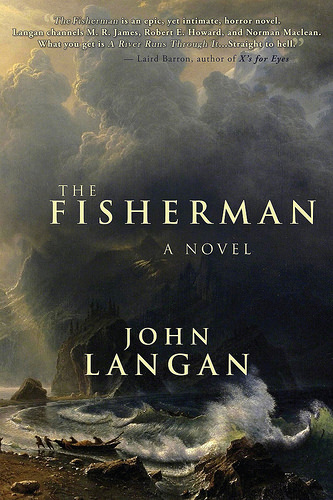 When I first wrote of
The Fisherman
[image error] in my July 19, 2016, blog post, I said (and I quote): "...this new John Langan novel, which I am sure will be on award shortlists next year."
When I first wrote of
The Fisherman
[image error] in my July 19, 2016, blog post, I said (and I quote): "...this new John Langan novel, which I am sure will be on award shortlists next year."And here it is, next year, and the final ballot for the Bram Stoker Awards has just been announced by the Horror Writers Association -- and The Fisherman by John Langan is one of five finalists for the award for "Superior Achievement in a Novel."
I am not surprised that a story (actually, a story within a story) such as this has been recognized by the HWA members and awards jury.
Here's an excerpt from The New York Times Book Review by Terrence Rafferty on October 26, 2016:
In his superb new novel THE FISHERMAN (Word Horde, paper, $16.99), John Langan also manages to sustain the focused effect of a short story or a poem over the course of a long horror narrative, and it's an especially remarkable feat because this is a novel that goes back and forth in time, alternates lengthy stretches of calm with extended passages of vigorous and complex action, and features a very, very large monster. Like Robert Aickman, Langan is a short story writer by inclination; The Fisherman is only his second novel, and this one took him over a dozen years to finish....The Fisherman is unusually dense with ideas and images, and, with the tale heard in the diner taking up the middle third of the book, it's oddly constructed. But there's a beauty in its ungainliness. Langan writes elegant prose, and the novel's rolling, unpredictable flow has a distinctive rhythm, the rise and fall of its characters' real grief. These fishermen are restless men, immobilized but never truly at peace. Again and again, they cast their lines in the hope of catching something, anything, that will restore them to who they were. Abe characterizes himself as "desperate for any chance to recover what I'd lost, no matter what I had to look past to do so," and you feel that sad urgency on every page of his strange and terrifying and impossible story.
Langan's novel wears its heart on its sleeve.
The Fisherman is available direct from publisher Word Horde, in a $16.99 bundle that includes a signed bookplate and the ebook in your choice of format, or from Amazon[image error], or from your bookseller of choice.

Published on February 23, 2017 14:51
February 4, 2017
The Asylum of Dr. Caligari by James Morrow
[image error]
[Added 02/05/2017: Expect to see this novella on many awards' short lists come 2018....]
I have been quite fortunate to have worked on not just one, not two, but three novellas by James Morrow that have been -- or will be -- published by Tachyon Publications. The first of these, Shambling Towards Hiroshima [image error], was published in 2009.
The second, The Madonna and the Starship , published in 2014, was the focus of my blog post of November 24, 2013, in which I wrote of my work on this novella.
, published in 2014, was the focus of my blog post of November 24, 2013, in which I wrote of my work on this novella.
In that blog post I stated (and I quote): "James Morrow is an absolute master of the sardonic..." -- and with The Asylum of Dr. Caligari [image error], his third novella from Tachyon, due to be published in June, James Morrow does not disappoint.
Here is the ad copy for the book:
The story is all about a painting -- Ecstatic Wisdom (well, actually two paintings, but you'll have to read the story to learn about the other) -- and its effect on the viewer, or viewers, as they came in regimental numbers to view the painting(s).
Here's a brief excerpt from the story itself: Francis Wyndham is clandestinely observing Dr. Caligari at work on his painting:
The Asylum of Dr. Caligari will be published in June and is now available for preorder directly from the publisher, Tachyon Publications, or from Amazon.com[image error], or your friendly neighborhood bookseller.

I have been quite fortunate to have worked on not just one, not two, but three novellas by James Morrow that have been -- or will be -- published by Tachyon Publications. The first of these, Shambling Towards Hiroshima [image error], was published in 2009.
The second, The Madonna and the Starship
 , published in 2014, was the focus of my blog post of November 24, 2013, in which I wrote of my work on this novella.
, published in 2014, was the focus of my blog post of November 24, 2013, in which I wrote of my work on this novella.In that blog post I stated (and I quote): "James Morrow is an absolute master of the sardonic..." -- and with The Asylum of Dr. Caligari [image error], his third novella from Tachyon, due to be published in June, James Morrow does not disappoint.
Here is the ad copy for the book:
The infamous Dr. Caligari: psychiatrist or psychopath? In this wry and satiric tour de force, award-winning author James Morrow offers a surprising and provocative take on a silent film classic.
In the summer of 1914, the world teeters on the brink of the Great War. An American painter, Francis Wyndham, is hired to provide art therapy at a renowned European asylum, working under the auspices of its mysterious director, Alessandro Caligari. Francis is soon beguiled by his most talented student, Ilona Wessels, whose genius with a brush is matched only by the erotic intensity of her madness.
Deep in his secret studio, Dr. Caligari, rumored to be a sorcerer, struggles to create Ecstatic Wisdom, an immense painting so hypnotic it can incite entire regiments to rush headlong into battle. Once Francis and Ilona grasp Caligari's scheme in all its supernatural audacity, they conspire to defeat him with a magical work of their own....
The story is all about a painting -- Ecstatic Wisdom (well, actually two paintings, but you'll have to read the story to learn about the other) -- and its effect on the viewer, or viewers, as they came in regimental numbers to view the painting(s).
Here's a brief excerpt from the story itself: Francis Wyndham is clandestinely observing Dr. Caligari at work on his painting:
Watching Caligari suffuse his canvas with whatever species of wizardry or variety of delusion possessed him, I decided his methods represented neither imagination abandoned by intellect, nor revelation tempered by logic, but a third phenomenon. He had beguiled both forces into a condition of mutual betrayal, reason convincing fantasy that violent monsters were desirable, fantasy coercing reason into abandoning its tedious allegiance to facts.
"Effundam spiritum meum in vobis, virtutibus! Perfectus es!"
Now he began spinning in circles—like a deranged dancer, or a whirling dervish, or a man inhabited by devils....
The Asylum of Dr. Caligari will be published in June and is now available for preorder directly from the publisher, Tachyon Publications, or from Amazon.com[image error], or your friendly neighborhood bookseller.

Published on February 04, 2017 10:36
The Asylum of Dr. Caligari by Jame Morrow
[image error]
I have been quite fortunate to have worked on not just one, not two, but three novellas by James Morrow that have been -- or will be -- published by Tachyon Publications. The first of these,
Shambling Towards Hiroshima
[image error], was published in 2009.
The second, The Madonna and the Starship , published in 2014, was the focus of my blog post of November 24, 2013, in which I wrote of my work on this novella.
, published in 2014, was the focus of my blog post of November 24, 2013, in which I wrote of my work on this novella.
In that blog post I stated (and I quote): "James Morrow is an absolute master of the sardonic..." -- and with The Asylum of Dr. Caligari [image error], his third novella from Tachyon, due to be published in June, James Morrow does not disappoint.
Here is the ad copy for the book:
The story is all about a painting -- Ecstatic Wisdom (well, actually two paintings, but you'll have to read the story to learn about the other) -- and its effect on the viewer, or viewers, as they came in regimental numbers to view the painting(s).
Here's a brief excerpt from the story itself: Francis Wyndham is clandestinely observing Dr. Caligari at work on his painting:
The Asylum of Dr. Caligari will be published in June and is now available for preorder directly from the publisher, Tachyon Publications, or from Amazon.com[image error], or your friendly neighborhood bookseller.

The second, The Madonna and the Starship
 , published in 2014, was the focus of my blog post of November 24, 2013, in which I wrote of my work on this novella.
, published in 2014, was the focus of my blog post of November 24, 2013, in which I wrote of my work on this novella.In that blog post I stated (and I quote): "James Morrow is an absolute master of the sardonic..." -- and with The Asylum of Dr. Caligari [image error], his third novella from Tachyon, due to be published in June, James Morrow does not disappoint.
Here is the ad copy for the book:
The infamous Dr. Caligari: psychiatrist or psychopath? In this wry and satiric tour de force, award-winning author James Morrow offers a surprising and provocative take on a silent film classic.
In the summer of 1914, the world teeters on the brink of the Great War. An American painter, Francis Wyndham, is hired to provide art therapy at a renowned European asylum, working under the auspices of its mysterious director, Alessandro Caligari. Francis is soon beguiled by his most talented student, Ilona Wessels, whose genius with a brush is matched only by the erotic intensity of her madness.
Deep in his secret studio, Dr. Caligari, rumored to be a sorcerer, struggles to create Ecstatic Wisdom, an immense painting so hypnotic it can incite entire regiments to rush headlong into battle. Once Francis and Ilona grasp Caligari's scheme in all its supernatural audacity, they conspire to defeat him with a magical work of their own....
The story is all about a painting -- Ecstatic Wisdom (well, actually two paintings, but you'll have to read the story to learn about the other) -- and its effect on the viewer, or viewers, as they came in regimental numbers to view the painting(s).
Here's a brief excerpt from the story itself: Francis Wyndham is clandestinely observing Dr. Caligari at work on his painting:
Watching Caligari suffuse his canvas with whatever species of wizardry or variety of delusion possessed him, I decided his methods represented neither imagination abandoned by intellect, nor revelation tempered by logic, but a third phenomenon. He had beguiled both forces into a condition of mutual betrayal, reason convincing fantasy that violent monsters were desirable, fantasy coercing reason into abandoning its tedious allegiance to facts.
"Effundam spiritum meum in vobis, virtutibus! Perfectus es!"
Now he began spinning in circles—like a deranged dancer, or a whirling dervish, or a man inhabited by devils....
The Asylum of Dr. Caligari will be published in June and is now available for preorder directly from the publisher, Tachyon Publications, or from Amazon.com[image error], or your friendly neighborhood bookseller.

Published on February 04, 2017 10:36
January 29, 2017
The Dark Knight Speaketh
Published on January 29, 2017 19:51
January 18, 2017
The Original Blue And Lonesome
 One of the best selling albums in 2016 was
Blue & Lonesome
[image error], The Rolling Stones' cover album of electric blues songs. Now these aren't the typical blues songs that one is used to hearing on blues-rock albums; there is no "Crossroads," no "Hideaway," no "Driftin' Blues," or "You Shook Me," to name just four, on Blue and Lonesome. So unless you are a follower of blues music, most, if not all, of the twelve songs on this album will be new to you.
One of the best selling albums in 2016 was
Blue & Lonesome
[image error], The Rolling Stones' cover album of electric blues songs. Now these aren't the typical blues songs that one is used to hearing on blues-rock albums; there is no "Crossroads," no "Hideaway," no "Driftin' Blues," or "You Shook Me," to name just four, on Blue and Lonesome. So unless you are a follower of blues music, most, if not all, of the twelve songs on this album will be new to you.According to the Stones' website:
"The album was produced by Don Was and The Glimmer Twins [aka Mick Jagger and Keith Richards] and was recorded over the course of just three days in December last year [2015] at British Grove Studios in West London, just a stone’s throw [pun intended?] from Richmond and Eel Pie Island where the Stones started out as a young blues band playing pubs and clubs. Their approach to the album was that it should be spontaneous and played live in the studio without overdubs...."
As I said, Blue and Lonesome is a cover album; all of the songs were previously written and recorded (not always by the same person in each instance) by blues greats during the 1950s and '60s, with one track dating to 1971. Here's the 12-song tracklist for the 2-LP vinyl edition:
SIDE A
1. Just Your Fool
2. Commit a Crime
3. Blue and Lonesome
SIDE B
1. All of Your Love
2. I Gotta Go
3. Everybody Knows About My Good Thing
SIDE C
1. Ride 'Em on Down
2. Hate To See You Go
3. Hoo Doo Blues
SIDE D
1. Little Rain
2. Just Like I Treat You
3. I Can't Quit You Baby
My goal with this blog post is to introduce you to the original recordings (or as close to the original recordings as the internet, and YouTube, will allow) of these twelve songs, to provide you with a wee bit of a feel for the musical influences on the Stones as a band, and the Glimmer Twins in particular.
I'm not going to bore you with a lot of facts and details, so I'm linking each artist to his biography on the AllMusic website. If you want more info on the likes of Little Walter or Howlin' Wolf or Lightnin' Slim or whomever, you can simply click on their linked names to read their AllMusic entry. From the biography page you can click to their discography, read reviews, etc. Also, the tunes that I am providing below are audio files only, but each is posted as a video on YouTube simply because that's how YouTube works. The video for each entry might be just a static picture, or pictures might change throughout the length of each song -- just keep in mind that there really is no video per se associated with each of these entries. The whole point is to listen:
Side A, Track 1: "Just Your Fool" was originally written and recorded in 1960 by Little Walter:
Side A, Track 2: "Commit a Crime" was originally written and recorded in 1966 by Howlin' Wolf (real name: Chester Arthur Burnett):
Side A, Track 3: "Blue and Lonesome," the album's title track, was originally written and recorded in 1959 by Little Walter, once again:
Side B, Track 1: "All of Your Love" was originally written and recorded in 1967 by Magic Sam (real name: Samuel Maghett):
Side B, Track 2: "I Gotta Go" was originally written and recorded in 1955 by, yet again, Little Walter:
Side B, Track 3: "Everybody Knows About My Good Thing" was originally recorded in 1971 by Little Johnny Taylor; the song was composed by Miles Grayson & Lermon Horton:
Side C, Track 1: "Ride 'Em on Down" was originally written and recorded in 1955 by Eddie Taylor:
Side C, Track 2: "Hate To See You Go" was originally written and recorded in 1955 by -- guess who? -- Little Walter:
Side C, Track 3: "Hoo Doo Blues" was originally recorded in 1958 by Lightnin' Slim; the song was composed by Otis Hicks & Jerry West:
Side D, Track 1: "Little Rain" was originally recorded in 1957 by Jimmy Reed; the song was composed by Ewart G. Abner Jr. & Jimmy Reed:
Side D, Track 2: "Just Like I Treat You" was originally recorded by Howlin’ Wolf and written by Willie Dixon in December 1961:
Side D. Track 3: "I Can't Quit You Baby" was originally written by Willie Dixon and recorded by Otis Rush in 1956:
And while you're at it, you might want to search YouTube for "Willie Dixon," one of the true, great blues performers of this era. You might also recognize some of his other, more well known songs: "Hoochie Coochie Man," originally performed by Muddy Waters; "Evil," originally performed by Howlin' Wolf; and "My Babe," originally performed by Little Walter.
I hope you enjoy the tunes....

Published on January 18, 2017 15:06
January 12, 2017
Hap and Leonard: Blood and Lemonade by Joe R. Lansdale
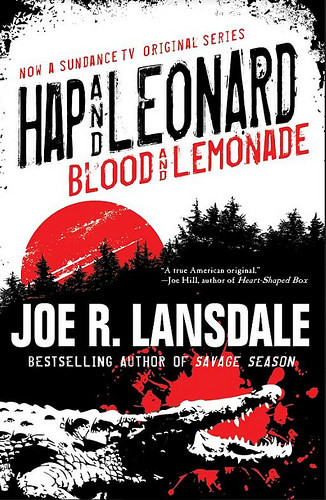 So, as I stated at the beginning of my previous post, while I was absent from blogging, life still moved on...other projects were completed, books were received....
So, as I stated at the beginning of my previous post, while I was absent from blogging, life still moved on...other projects were completed, books were received....One of the projects that I worked on is the new Hap and Leonard: Blood and Lemonade [image error] novel by Joe R. Lansdale, his ownself. This title, forthcoming in March from Tachyon Publications, will coincide with the premiere of season two of the SundanceTV series Hap and Leonard. (Check out the SundanceTV site for some H and L season two trailers, if you're not already familiar with this series.)
Hap and Leonard: Blood and Lemonade is actually a "mosaic" novel. A mosaic novel is comprised of a number of related stories that are tied together with new connecting material; occasionally the author will even tweak the beginnings and/or endings of some of the stories so that the book flows more cohesively from one story to the next. If you have read Ray Bradbury's classic The Martian Chronicles, then you have read a mosaic novel. Back in 2005 I acquired and edited a mosaic novel for Golden Gryphon Press entitled From the Files of the Time Rangers by Richard Bowes. The San Francisco Chronicle, in its review of Time Rangers, described the mosaic novel as "something more integrated than a simple story collection but not confined to a singular, linear narrative structure."
Here are the 14 stories that comprise Blood and Lemonade:
"Parable of the Stick" - first appeared in Miracles Ain't What They Used to Be (PM Press)
"Tire Fire" - original to this volume
"Not Our Kind" - first appeared in Hap and Leonard (Tachyon Publications)
"Down by the River Side" - original to this volume
"Short Night" - first appeared in Miracles Ain't What They Used to Be (PM Press)
"The Boy Who Became Invisible" - first appeared in The Bleeding Edge: Dark Barriers, Dark Frontiers, edited by William F. Nolan and Jason V. Brock (Cycatrix Press)
"Blood and Lemonade" - original to this volume
"In the River of the Dead" - original to this volume
"Stopping for Coffee" - original to this volume
"Apollo Red" - first appeared in Miracles Ain't What They Used to Be (PM Press)
"Coach Whip" - original to this volume
"The Bottom of the World" - original to this volume
"Squirrel Hunt" - original to this volume
"The Oak and the Pond" - first appeared in Hap and Leonard Rides Again (Tachyon Publications)
The stories are primarily from Hap's point of view, while he's hanging out with Leonard -- often when they are driving in Hap's truck, occasionally hanging out at the local Dairy Queen; a few of the latter stories take place at Hap's house, in the presence of both Brett (Brett Sawyer, Hap's on-again, off-again girlfriend) and Chance (Hap's daughter).
We learn how these two disparate individuals -- Hap Collins, a liberal, typically non-violent white boy (who spent time in federal prison as a young man for refusing to serve in the Vietnam War), and Leonard Pine, a gay, black, Vietnam vet (and a Republican) -- actually meet, and not only become partners and friends, but brothers.
In his review of Blood and Lemonade on Dangerous Dan's Book Blog, Daniel Schwent writes: "Lansdale's beer and tailgate style of storytelling gives him a unique voice and feels like it was written specifically for my ears. There is comedy, fist fights, and even some horror in the form of a ghost story, showing the depth and versatility of Lansdale's style."
Hap and Leonard: Blood and Lemonade is available direct from Tachyon Publications, and always through Amazon.com[image error].

Published on January 12, 2017 12:13
January 10, 2017
Book Received: Pirate Utopia by Bruce Sterling
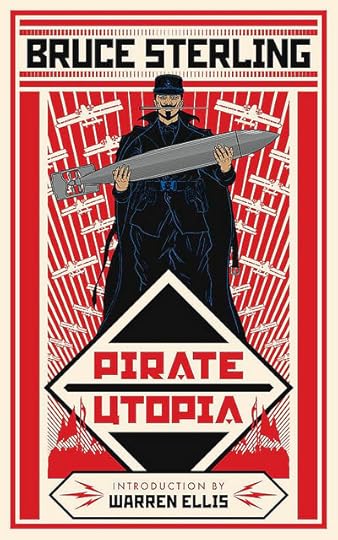 So while I was absent from blogging, life moved on...other projects were completed, books were received....
So while I was absent from blogging, life moved on...other projects were completed, books were received....One such book is Bruce Sterling's Pirate Utopia
 , a beautifully crafted hardcover from Tachyon Publications.
, a beautifully crafted hardcover from Tachyon Publications.In addition to the *starred* Publishers Weekly review I posted on October 16 last year, here are excerpts from a few more reviews:
1. From author Michael Swanwick's blog Flogging Babel:
Bruce Sterling has always had a complicated relationship with science fiction. He has a particular brilliance for writing the stuff and a noted loathing for its conventions. This explains much about Pirate Utopia, which is almost not SF and yet should prove eminently satisfactory to genre readers.
The Free State of Fiume was a real thing. Fiume was a port city which was seized by troops led by the Italian poet Gabriele D'Annunzio. Very briefly, it became an attempted Futurist utopia.
The novella explores this strange phenomenon through the lens of the single worst member of the new government, exposing along the way the seductively poisonous appeal of fascism. At the end, after the inevitable has played out, Harry Houdini appears with two alt-historical pulp writers to implicate science fiction and fantasy literature in the whole mess.
It really is quite brilliant.
2. From Locus magazine's review by Gary K. Wolfe:
One can be reasonably suspicious of a novella whose alternate history is so obscure, contorted, and bordering on the absurd that it needs appendices to help us draw the connections, but the overall effect of Pirate Utopia is more chilling than comical...
The idea of a brutality as policy crops up repeatedly in the many discussions that make up the intellectual heart of the story, and you can't help but read forward a century or so to see how such ideas persist even today. In his interview with [Rick] Klaw, Sterling relates his tale to Sinclair Lewis's It Can't Happen Here and notes that, as Lewis said, fascism in the US "would arrive wrapped in the flag and carrying the cross under American circumstances." Pirate Utopia may seem to be about an ancient and almost forgotten struggle between Italy and Yugoslavia, but its themes are as relevant as this year's presidential politics.
3. From author Cory Doctorow on boingboing.net:
Sterling's Pirate Utopia captures both the excitement and the shabbiness of Futurism and fascism, the sense of trembling anticipation and the terror of merciless technocratic rule where corruption is considered efficient and meritocratic. For all that this is a very cerebral story -- much of the prose is distant and precise, like a Futurist's oiled machine stamping out words -- Sterling masterfully winds in all manner of blood and love and sorrow into the story, not to mention the odd belly-laugh.
This novella is a beautiful object, with the most amazing super-modernist black and white interior illustrations and a cover that beggars belief.
4. And lastly (though there are many more very fine reviews available on this novella) from Max Booth III on LitReactor:
This is a very short book occupied by an impressive cast of characters—most of them grabbed straight from history, although used in ways you might not entirely expect. This is a Futurism novel that looks at the past rather than the future. It's an alternate history clusterfuck of brilliant, whacky world-building and hilarious, bizarre characters. I am not going to discuss the plot, but I will tell you that, in the world of Pirate Utopia, Hitler passed away while saving someone's life in a bar, Lovecraft works not only for Houdini, but is also a member of the U.S. spy delegation—oh, and Mussolini has evidently been shot in the cock, which is of course wonderful. This is a book about piracy and Futurism. Building a world while stealing everything in it. When you have an oxymoron for a title, there's really no way to predict what awaits you, and Pirate Utopia exceeds all expectations. Also, make sure you stick around afterward for the impressive special feature essays and interview with Sterling. They'll help you make sense of what the hell you just read.
In his review, Cory Doctorow refers to the "most amazing super-modernist black and white interior illustrations and a cover that beggars belief." [Note: other reviewers have mentioned the artwork as well, but I simply didn't include that in my excerpts.] All the illustrations in Pirate Utopia are the work of John Coulthart, who has written a very enlightening 1,000-plus-word essay entitled "Reconstructing the Future: A Note on Design" that you'll find at the end of the book. You can read my blog post on my initial work on the novella, published on June 10, 2016, with a link to some of the interior illustrations (scroll down to the end of the blog); and a follow-up blog post on July 14, 2016, with additional examples of the illustrations.
Pirate Utopia is available direct from Tachyon Publications, and always through Amazon.com
 .
.
Published on January 10, 2017 15:44
January 9, 2017
The Delirium Brief by Charles Stross: Laundry Files Book 8
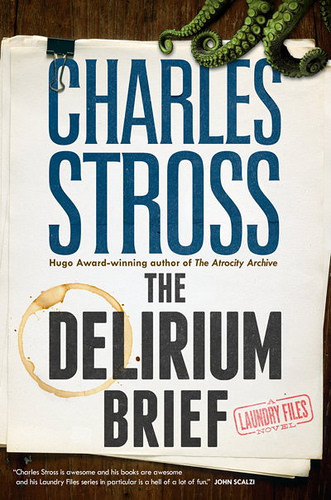 Tor.com coverOkay, okay...so I haven't been the world's best blogger these past few months (though I did try to keep you entertained on occasion with quotes, vids, etc.).... Blame it on the run-up to the presidential election (and of course the aftermath, sigh....), but then again that excuse is only good through the beginning of December.
Tor.com coverOkay, okay...so I haven't been the world's best blogger these past few months (though I did try to keep you entertained on occasion with quotes, vids, etc.).... Blame it on the run-up to the presidential election (and of course the aftermath, sigh....), but then again that excuse is only good through the beginning of December.For the past nearly four weeks I have been working on the latest installment of Charles Stross's Laundry Files series: volume 8, entitled The Delirium Brief [image error]. This new novel will be published in July 2017 in the U.S. by Tor.com and by Orbit Books in the UK. [*]
So while I slaved away working on The Delirium Brief, the publishers were, naturally, shut down for the holidays. Merry Christmas and Happy New Year!
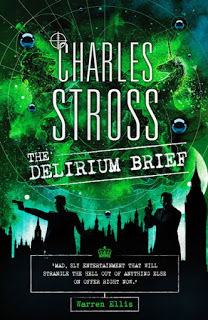 Orbit UK coverBut I'm not really complaining, honest: one of the best Christmas-Chanukah-Kwanzaa presents I could ever ask for is the opportunity to work on a new Laundry Files novel. (Also, I'm always pleased to have work in front of me -- any work, at any time!)
Orbit UK coverBut I'm not really complaining, honest: one of the best Christmas-Chanukah-Kwanzaa presents I could ever ask for is the opportunity to work on a new Laundry Files novel. (Also, I'm always pleased to have work in front of me -- any work, at any time!)According to the content blurb provided by the publisher (available for your reading pleasure on Amazon.com[image error]) -- and I quote, though not in its entirety:
"... following the invasion of Yorkshire by the Host of Air and Darkness, the Laundry’s existence has become public, and Bob is being trotted out on TV to answer pointed questions about elven asylum seekers. What neither Bob nor his managers have foreseen is that their organization has earned the attention of a horror far more terrifying than any demon: a British government looking for public services to privatize. Inch by inch, Bob Howard and his managers are forced to consider the truly unthinkable: a coup against the British government itself."
So, what we know here is that the British government is outsourcing a number of its services, which obviously includes the Laundry... But the real question is: Why?
I will warn you right now that to answer that question without giving away the entire punchline I will still have to yield to a few "mini" spoilers. So if the idea of knowing any spoilers whatsoever for The Delirium Brief, regardless of how small, offends your better judgment, then you had best close this blog post window now!
On the other hand, if you are still reading, let me provide a caveat: If you are fairly new to the Laundry Files series and haven't read all the prior volumes, then you just may want to stick around to learn which volumes you will need to catch up on before The Delirium Brief is published six months from now. (Or maybe you have read all the volumes but it's been years for some of them and, well, the memory ain't what it used to be....)
The Delirium Brief begins shortly after the events in The Nightmare Stacks. In that previous volume, the Host of Air and Darkness, the alfär, have attacked the city of Leeds. When an invading force destroys all the vehicles on a city street, and downs aircraft flying overhead, well, these aren't events that the Laundry can keep under wraps. And when the British government -- and its citizens -- start questioning how this catastrophe could have happened on British soil, and why weren't we better prepared to defend against such an invasion, well, again, the fingers all point directly to the Laundry, whose existence has now been revealed to the government and the general population.
Since Bob Howard was out of the country at the time of the attack, he's the only Laundry personnel who is innocent, so to speak, of any wrongdoing -- so Bob is trotted out before the media and the government inquiry boards to answer questions in an attempt to explain these disastrous events.
Now, in addition to The Nightmare Stacks, readers of this forthcoming volume will need to be solidly familiar with characters and events in The Fuller Memorandum (book 3), The Apocalypse Codex (book 4), and The Annihilation Score (book 6).
In fact key characters (one each) from The Fuller Memorandum and The Annihilation Score were both imprisoned at the end of those volumes and haven't been heard from since; and one of the key characters in The Apocalypse Codex was thought to be deceased by the end of that volume, but... In the Laundry Files, little is really as it seems....
But getting back to the original question: Why does the British government want to outsource security services? The answer is the main spoiler in this post: because the government has been compromised.
Once the existence of the Laundry has been publicly revealed, government officials realize that the organization has never had any government oversight. At this same time, an individual is meeting with government officials (and I use the term "meeting" loosely) in an attempt to convince them to outsource the government's security -- including the security for which the Laundry is responsible -- to his organization: full security, with full oversight.
I'll leave it at that -- and you'll just have to wait until July for the publication of The Delirium Brief [image error].
---------------
[*] Just an FYI for those unfamiliar with my work and/or haven't read this blog regularly over the years: To date I have worked on all eight volumes of the Laundry Files. I acquired and edited The Atrocity Archives and The Jennifer Morgue for indie publisher Golden Gryphon Press. (Read my blog post entitled "Charles Stross: On Her Majesty's Occult Service" for more details on these first two books.) Books 3 through 7 I worked on as a freelancer for Ace Books; and this latest volume as a freelancer for Orbit UK. For all the blog posts, click the "Laundry Files" tag in the right frame of this page.

Published on January 09, 2017 11:41
January 2, 2017
Gandalf Quote
"I wish it need not have happened in my time," said Frodo."So do I," said Gandalf, "and so do all who live to see such times. But that is not for them to decide. All we have to decide is what to do with the time that is given us."
― J. R. R. Tolkien, The Lord of the Rings

Published on January 02, 2017 16:02

